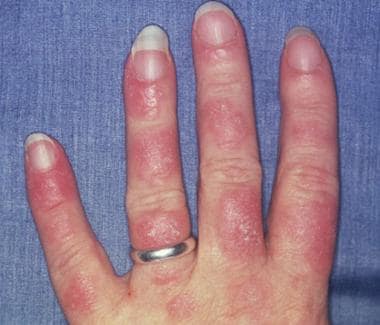What are 10 key points about lupus?
In this article we will describe 10 facts about systemic lupus erythematosus (lupus, SLE). Let’s start with the basics.
1. What is lupus (systemic lupus erythematosus, SLE)?
Long-term autoimmune disease – in which the body’s immune system attacks its own healthy tissues and organs.
There are many challenges to reaching a diagnosis of lupus. Lupus is known as ‘the great pretender’ because its symptoms mimic many other illnesses. Lupus symptoms can also be non-specific, can come and go, and can change.
For all of these reason, on average, it takes nearly seven years for people with lupus to be diagnosed, from the time they first notice their lupus symptoms. Even though lupus is a lifelong condition, the earlier it is diagnosed, the better.
2. Epidemiology
Women are affected more than men (90 vs 10%) – with onset especially at age 25-40 years (i.e. women of child-bearing age). But lupus can affect children as well. In fact, 20% of patients with lupus are children. It is 2-3x more common in Black or Asian people.
3. Classification
Different types exist, including:
- Systemic lupus erythematosus (SLE)
- Discoid lupus erythematosus (DLE) – just affecting the skin
- Drug-induced lupus. Drugs include Isoniazid, Hydralazine, Tumour-necrosis factor (TNF) alpha inhibitors (such as etanercept, infliximab and adalimumab) and Quinidine.
- Neonatal lupus. This is a rare condition in which the mother’s antibodies affect the foetus.
4. Cause of lupus
Unknown. But genetic and environmental factors, and hormonal imbalances, are believed to play a role in its development.
5. Which systems can be affected?
Almost any part of the body – but especially including the skin, hair, joints, kidneys, lungs, heart, and brain. Involvement of the kidneys or/and the brain is the most serious.
6. Symptoms of lupus
Vary widely – and include fatigue, joint pain, mouth ulcers, rashes (especially photosensitive ones, including a classic, facial bilateral ‘butterfly rash’), fever, and chest pain.
Renal lupus (or ‘lupus nephritis’) can also present as AKI, CKD and nephrotic syndrome. ‘Cerebral lupus’ can present as seizures, stroke or psychosis.
Sun exposure, stress and pregnancy can lead to lupus flares.
Typical butterfly rash of lupus

Photosensitive lupus rashes typically occur on the face or extremities, which are sun-exposed regions.
7. Diagnosis
There is no single test to diagnose lupus. So it is diagnosed through a combination of the history (patient’s symptoms), physical examination, blood and urine tests (dipstick, MC&S and uACR), and imaging related to the system involved (e.g. ultrasound if renal). Blood tests include:
- Full blood count – there may be low blood cell counts: anaemia (low red cells), low white blood cells, or low platelets
- Strangely CRP is classically normal (or not high) when lupus is active
- U+E, LFT, bone, glucose
- Positive antinuclear antibody (ANA). These are antibodies that can cause the body to begin attacking itself, and are present in nearly all lupus patients
- Other abnormal antibodies: anti double-stranded DNA (called ‘anti-dsDNA’), anti-Smith (referred to as ‘anti-Sm’), anti-Ro(SSA) and anti-La(SSB) and antiphospholipid (APL) antibodies
- Complement levels (C3/4) – often low.
Sometimes a biopsy, in which doctors take out a piece of tissue from the kidney or skin to look at under a microscope, is necessary.
8. Treatment
Anti-inflammatory medication and immunosuppressants (including steroids) can help manage symptoms. Though there is no cure for lupus.
Mild lupus
This is treated with:
- Medicines such as aspirin or ibuprofen (NSAIDs) for pain
- Medicines such as hydroxychloroquine to control skin and joint symptoms
- Sunscreen to protect skin from the sun
- Corticosteroid creams to treat rashes.
Moderate lupus
If lupus is more severe, patients may need oral steroids (e.g. prednisolone) and other stronger immunosuppressants (both oral and injections).
These include azathioprine, mycophenolate mofetil, methotrexate, and cyclophosphamide. Such medication dampens your immune system, to stop it from attacking your own tissue.
Newer biological therapies now exist for lupus. These more specifically target the parts of the immune system that are triggering inflammation and causing damage. The most common biological agents are belimumab and rituximab.
Severe lupus
When lupus affects the kidneys it is called lupus nephritis. There are 6 types. All are forms of glomerulonephritis, i.e. they mainly damage the glomeruli of the kidneys. If lupus has severely damaged your kidneys, you may need:
- Plasma exchange
- Dialysis
- Kidney transplantation.
9. Overlap with other autoimmune diseases
Other autoimmune diseases – such as rheumatoid arthritis and Sjogren’s syndrome – occur with lupus.
10. Outlook
Can be a chronic and debilitating disease – with proper management and care, many people with lupus are able to lead full and productive lives.
Summary
We have described 10 key points about lupus. We hope you understand the disease better now.
Last Reviewed on 7 May 2024
